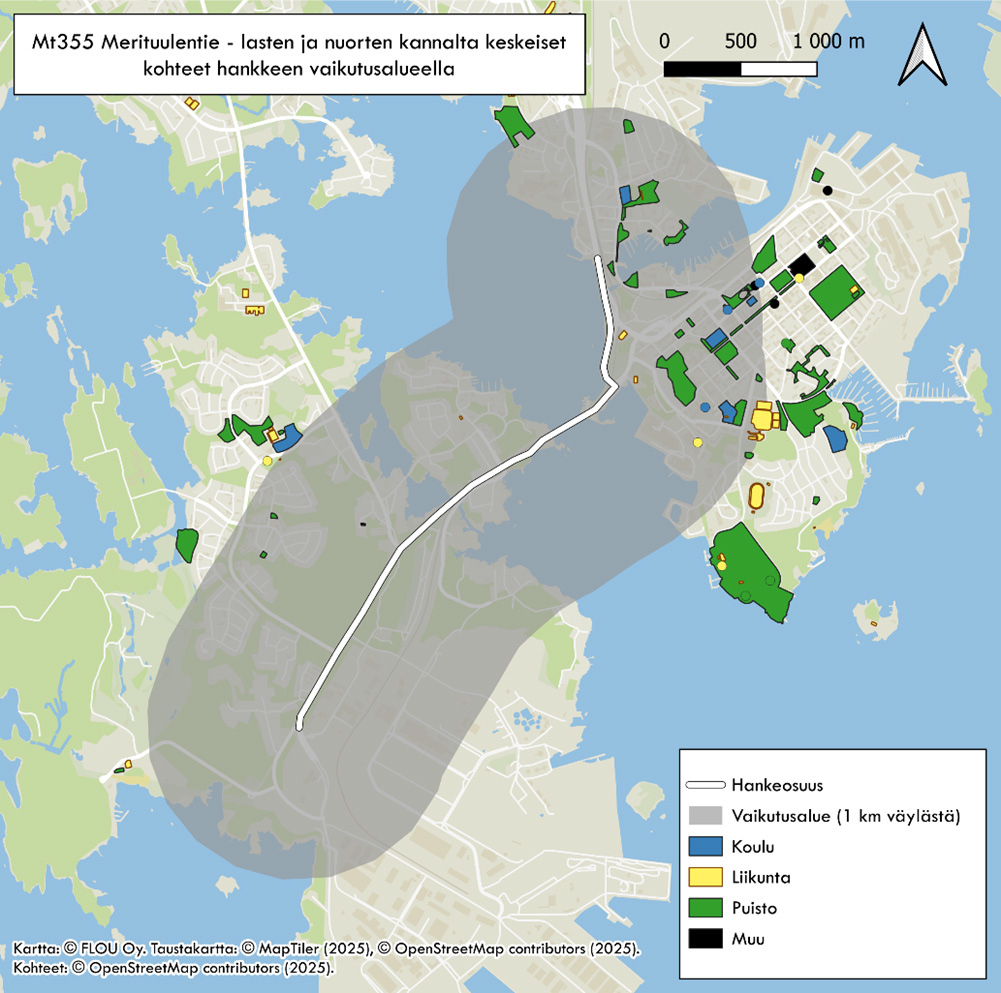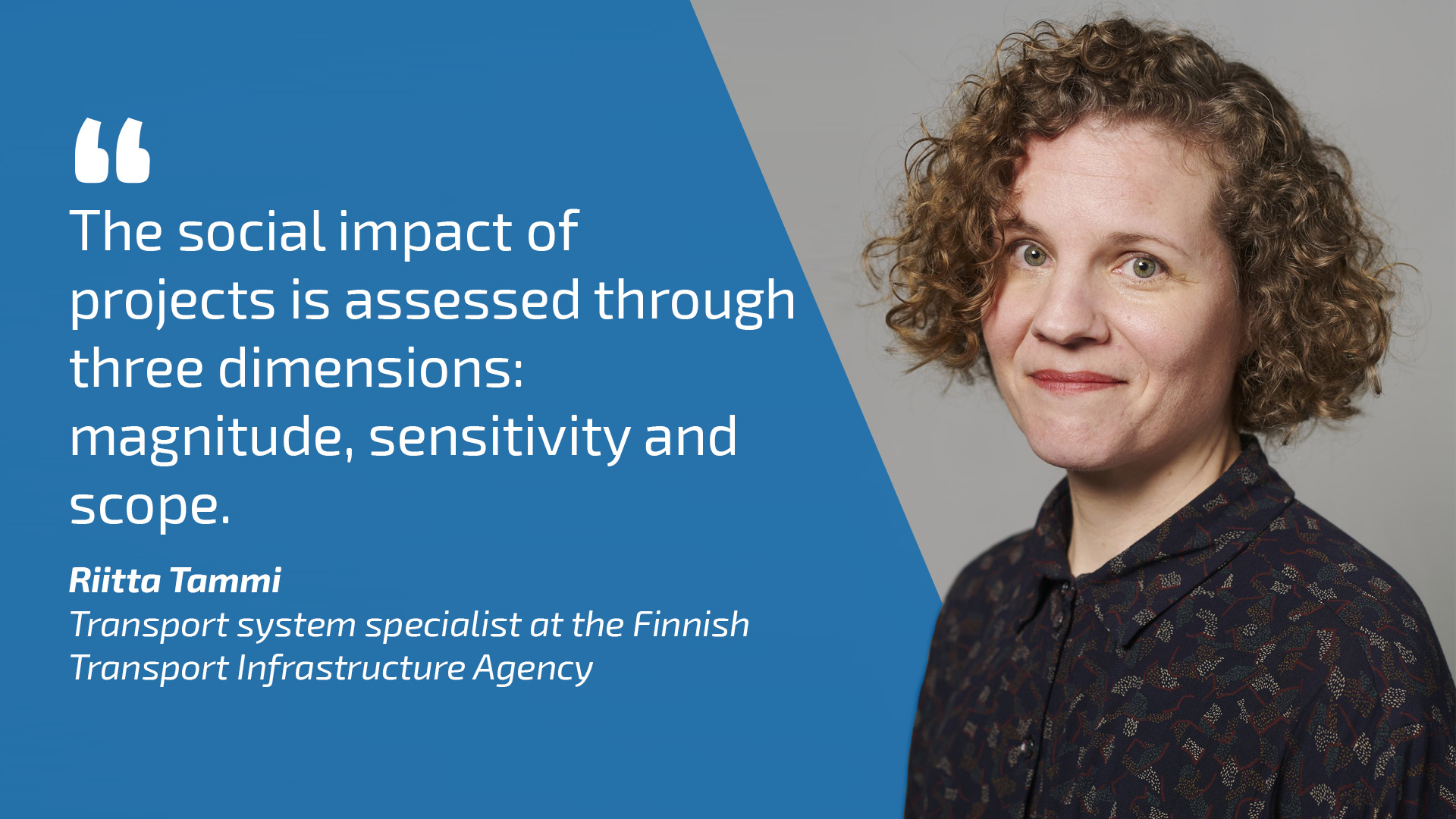The Finnish Transport Infrastructure Agency has developed a new method for assessing social impacts, in which the impact of transport infrastructure projects on people is examined through three vulnerable population groups. The long-term goal is to have an equal transport system that takes better account of the needs and life situations of different groups of people.
Social impact assessment means weighing up the impacts of different transport infrastructure projects, or the entire transport system, on people. The social impact assessment often focuses on population groups which are vulnerable from the perspective of the transport system. Vulnerable groups are defined by, for example, reduced mobility or disability, age, place of residence or low income.
The Finnish Transport Infrastructure Agency has developed a new method for assessing the social impacts of transport infrastructure projects from the perspective of three groups: children and young people, people with reduced mobility and older people, as well as people with low income.
“This is the first systematic examination of the social impacts of transport infrastructure projects on different population groups. Although traffic noise, or decibel levels, the impact of noise on the value of housing and the number of people exposed to noise, has been examined for a long time in transport infrastructure projects, social impact assessment enriches this information by specifying the vulnerable groups the noise impacts are targeted at,” explains Riitta Tammi, transport system specialist at the Finnish Transport Infrastructure Agency, responsible for the development of the method.
The method examines the impacts of transport infrastructure projects on three different types of impacts: accessibility, perceived safety and noise.
Spatial data, population data produced by Statistics Finland and expert assessments of project plans will be combined as the basis for assessing the targeting of impacts. The project location data, as well as population and service data are combined in the QGIS spatial data programme.
Three dimensions of social impact
In practice, the social impact of projects is assessed through three dimensions: magnitude, sensitivity and scope. The magnitude of the impact is the intensity of the change, which can be either positive or negative. The magnitude of the impact is assessed according to works in the projects. For example, building a separate walking and cycling route enhances the perceived safety in traffic for all road users.
“With regard to accessibility, it is assessed whether the project will improve children’s and young people’s possibilities of independently going to school or hobbies, whether it will facilitate access to health services for people with reduced mobility or whether it will improve the access of people with low income to workplace with affordable modes of transport,” Tammi summarises.
Sensitivity, on the other hand, describes the region’s ability to serve the population group in question.
“For children and young people, the location and number of schools and hobbies are examined, whereas for persons with reduced mobility and older people, the proximity of grocery shops, pharmacies, libraries and health services is assessed. In the case of low-income people, on the other hand, the location of workplaces and basic services in the impact area is examined,” explains Tammi about assessment of sensitivity.
The third dimension, i.e. scope, indicates how many people belonging to a certain population group live in the project impact area. For example, for children and young people, the number of 7-17-year-olds is calculated within a one-kilometre radius of the project.
More versatile information on the significance of projects
The new impact assessment method has already been tested with 14 road projects. The results show that understanding the targeting of impacts may change the perception of the significance of the project.
For example, the Motorway 355 Merituulentie project in Kotka is, as a rule, a transport infrastructure project that improves the flow of heavy traffic. However, the assessment of the targeting of impacts revealed that the works involved in the project would have positive impacts on children and young people, persons with reduced mobility and the elderly, as well as people with low income, who live in relatively large numbers in the project impact area.

Image: Motorway 355 Merituulentie project: key sites for children and young people in the project impact area.
“Social impact assessment diversifies our understanding of the significance of projects. From now on, we will also continuously gather information on the targeting of impacts of the planned projects. In the future, it could be possible to examine the social impacts of the transport system on vulnerable population groups as a whole,” says Tammi.

